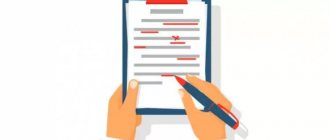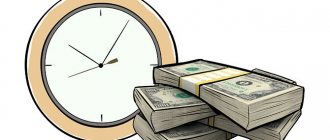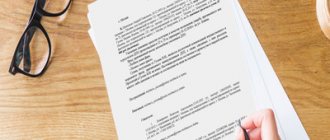Let's figure it out, a receipt is an official document in court. And can the receipt be used as evidence?
The other day, a distant acquaintance called me asking me to borrow money against a receipt to buy an iPhone 7 Plus as a gift for his girlfriend.
Refused. And then he turned to a lawyer to understand the issue of the value of such pieces of paper as legal documents. Also interesting: Feature of the Moscow metro: how to understand which direction you are going.
I collected the data obtained in an article for our readers. It will be useful in life.
Note! The information presented is valid for Russia. Discuss the situation in your country with a local lawyer.
What is a receipt?
A receipt is a handwritten document that records the relationship of two or more persons in a particular area. Most often, it turns out to be confirmation of a loan of funds, transfer of documents for temporary use, and so on.
According to their purpose, receipts are divided into several main types:
- Receipt for child support, which is due to one of the parents living with the child until adulthood
- A receipt for no claims, which confirms this fact in case of damage to health, property, etc.
- A receipt for receipt of documents or securities, which confirms the need to return them at a specified time
- A promissory note confirming the transfer of a specific amount of money and the need to return it at a specified time - the most popular type
The receipt is drawn up in one copy and remains with the party to whom the money, documents, etc. should be given.
Rules for drawing up a receipt
You can write a receipt for a monetary debt by hand and on plain paper - there are no strict requirements for drawing up the document. Of course, a document can be printed, but it is believed that a written document has more legal force, since in a controversial situation, a graphological or handwriting examination can be carried out to prove its authenticity. But the printed text, no matter how hard you want, cannot be studied.
In this case, the document must contain mandatory information. For example, you should enter the date and place of drawing up of the receipt, who draws it up and who is the other party, indicating passport details, addresses and other identifying data.
Considering that the receipt implies a cash payment, the amount must be indicated. And not only in digital equivalent, but in words. In cases where money is transferred in foreign currency, you should indicate the exchange rate at the time of transfer of money and clarify whether the amount of the debt will change if the rate begins to fluctuate in one direction or another. It is advisable to indicate whether interest is accrued for the period while the financial instrument is used.
The document should also clarify the terms and method of refund. For example, will they be returned in cash or transferred to a card, the full amount or several payments. If you plan to repay the money in installments, you should draw up a payment schedule in order to track delays, if any, and take action in a timely manner.
How to write a receipt correctly
In order for the receipt to become a legal document and not turn into a substitute for toilet paper, it must be properly executed.
Example of a receipt. Clickable.
Pay attention to 10 basic nuances of the receipt:
- The receipt is written by hand (not printed)
- The name of the document should be in the middle - “Receipt”
- Below the name on the left is the name of the city (“Moscow”)
- On the right opposite the city is the date in full (“March 20, 2010”)
- Last name, first name and patronymic are written in full (“Ayfonov Ayfon Ayfonovich”)
- After your full name you need to indicate your full passport details (series, number, who issued it), date of birth, address of residence - this is necessary for both parties
- Amount of money in numbers and words (or description of another benefit transferred)
- Name of the currency (or other nuances of the relationship)
- Date of return of money (documents, etc.)
- Below the text on the left is the date of the signature, and on the right is the signature of both parties (it should resemble the passport as closely as possible)
If the receipt was drawn up in front of witnesses (two or more), their signatures, like those of the parties to the transaction, will also come in handy. This condition can be considered optional, but desirable.
Cases when you can draw up a receipt by hand
Despite the convenience of drawing up and a number of advantages of a handwritten receipt, it cannot be used in every situation. Before drawing up such a document, it is important to know whether it will have legal force in this case. Since there is a list of agreements, for example, an agreement for the purchase and sale of real estate, an agreement for the donation of real estate and others, which are valid only after being certified by a notary.
You can limit yourself to a handwritten receipt if the amount borrowed does not exceed ten minimum wages. It is also better to record amounts less than the above in this document so that unpleasant situations do not arise. Large sums must be certified by a notary office.
When providing different types of services, such a receipt also continues to be valid.
It will also be relevant when renting/renting an apartment. In this case, two parties can protect themselves in this way: one - from dishonest landlords, the other - to exclude the option of terminating the transaction in a short time, which was not initially counted on. In such a situation, all financial relations must be agreed upon and recorded in the contract. It is necessary to indicate the amount of money transferred for the apartment and the period during which the tenants have the right to use the housing.
What legal force does a handwritten receipt have?
The norms of Russian legislation do not imply that the receipt must necessarily be printed - it can be made in any form.
Moreover, a handwritten receipt is easier to identify by handwriting, making it even better than a printed one.
If the situation has reached court proceedings (alimony is not paid, claims are made, documents or money are not returned, and so on), and the author of the receipt refuses his obligations, the receipt will become excellent evidence in court.
The witnesses in whose presence the receipt was drawn up will also be very helpful here.
Disclaimer. What to do
It often happens that the defendant refuses to fulfill its debt obligations and evades responsibility.
In such situation:
- A statement is written with an official demand for repayment of the debt.
- Sent by registered mail to the debtor's address.
- Notification of receipt is noted.
- Wait thirty days. The legal framework specifies exactly this period of consideration.
Note!
If there is no response from the party, the creditor goes to court to protect rights and receive compensation.
Do I need to notarize the receipt?
Not necessary, but possible.
Here are the benefits of notarization:
- The notary can check the legality of the transaction as such
- Notarization more easily confirms the identity of the person who wrote the receipt.
- A receipt with notarization is more likely to be accepted by the court as evidence
But the services of a notary cost money, so they are not used so often.
I think in this case you need to focus on the seriousness of the transaction. If we are talking about a relatively large amount of money or important documents, certification is required. Otherwise, as desired.
Risk for the borrower
Although most of the risks when applying for a loan are borne by the lender, the other party - the borrower - may also suffer in the event of unlawful actions of the lender:
- Early demand for debt repayment;
- Unilateral change in the repayment schedule and interest rate;
- Repeated demand for payment - if the lender “forgot” to return the receipt to the borrower after repaying the debt;
- Reimbursement of debt at the expense of the borrower’s property, etc.
To protect yourself from such troubles, the borrower only needs to competently draw up a promissory note, which will describe in detail all the details of the transaction. In this case, if disagreements arise, you can take the case to court or resolve it with the help of a lawyer.
Let's summarize and draw conclusions
Let's briefly and point by point:
- The receipt has legal force and can be used as evidence confirming something in court, the main thing is that it is drawn up correctly
- A handwritten receipt is even more powerful than a printed one, because it can be used to more accurately identify the author - make sure that the signatures match the passport
- Additional witnesses to the preparation of the receipt - they will come in handy
- Notarization of the receipt would not hurt – it makes it easier to determine the author of the document
And most importantly, lawyers argue that receipts should not be compared to toilet paper. So use it.
Please.
Have you encountered promissory notes or other receipts? If yes, be sure to share your personal experience. I'm sure it will help many.
( 31 votes, overall rating: 4.35 out of 5)








